Welcome to our guide on Hydrangea Garden Ideas. Whether you’re a beginner looking for some basic tips or an experienced gardener eager to try something new, we’ve got lots of great suggestions that will help you get the most out of your garden. We’ll answer some common questions and provide helpful advice on planting, pruning, and caring for your hydrangeas. So let’s get started!
Hydrangea Stairs
One of the unique ways to use hydrangeas in your garden is to create a set of stairs. To do this, choose a variety of hydrangea plants with different colors and sizes that will look good when placed side by side. Plant each one a few inches further apart than their root balls’ width so they have plenty of room to grow. As they mature and bloom, the flowers will cascade down each step like a waterfall.
For an extra special touch, add a border along the edges with low-growing shrubs or colorful perennials for contrast. This design looks especially eye-catching when viewed from above and is sure to draw attention from your guests. [1]
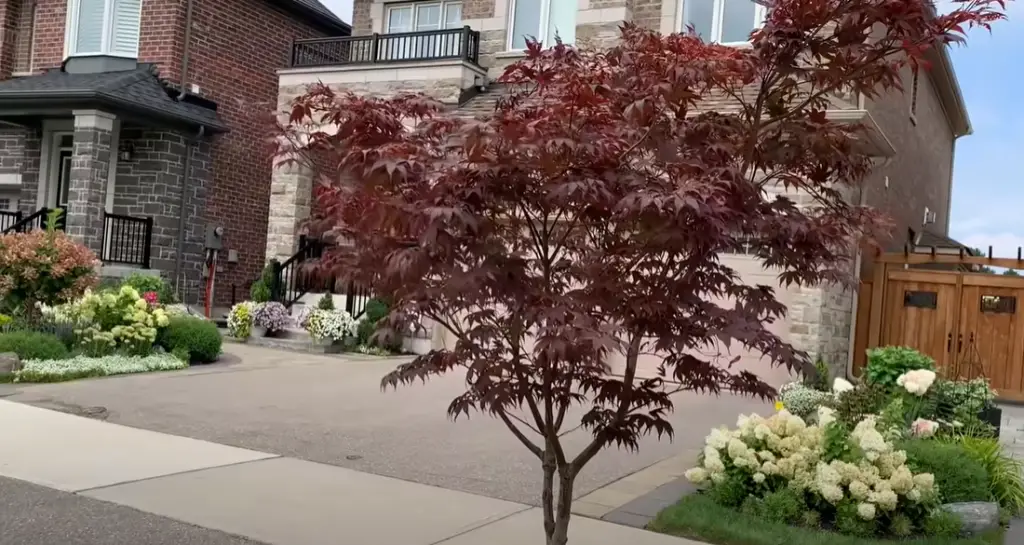
Southern Hydrangeas
Southern Hydrangeas are a beautiful and versatile flower that can be used in many areas of your garden. They grow best in warm climates, but they can also tolerate cooler climates as well. There are several different varieties available, ranging from white to pink to blue. When it comes to arranging them in your garden, you have lots of options. Here are some ideas to get you started:
- Use them as a backdrop for other plants. Plant tall varieties of Hydrangeas along the back border of your garden, and then use smaller flowers in front for extra color and texture.
- Create an outdoor living space with Hydrangeas as the main attraction by planting them in a U-shape around your seating area. For a dramatic effect, use bright pink or blue Hydrangeas to contrast with the green foliage.
- Plant low growing ground cover varieties of Hydrangeas around a pond or water feature to create a colorful and serene setting.
- Create a stunning easy-care hedge with Hydrangeas. Plant them in rows and trim regularly to keep a neat appearance.
- Plant them directly in the ground for maximum impact. This type of planting creates a full, dense look that will give your garden an instant makeover! [1]
A Summertime Classic
Hydrangeas are a classic summertime favorite. There is something special about their big, billowy blooms that adds an instant touch of charm and beauty to any garden. If you’re looking to add some hydrangeas to your landscape or want to spruce up an existing one, here are some ideas for creating the perfect Hydrangea Garden. [1]
Doorway to Paradise
Creating a garden with hydrangeas is like creating a doorway to paradise. These large, sprawling bushes fill up any space with an abundance of colors and blooms. You can find these plants in almost every corner of the world, from North America to Europe, Asia and Australia. They’re known for their long-lasting blooms and vibrant colors, so they make an ideal addition to any garden.
But before you jump into creating a hydrated paradise, there are some important things to consider. Read on for our frequently asked questions about hydrangea gardens as well as useful tips for keeping your garden looking its best! [1]
Cutting Garden
Cutting gardens are ideal for showcasing Hydrangea plants. These special gardens feature a variety of colors, heights and textures that will create a stunning display in your landscape. The key to successful cutting garden design is to incorporate plants that bloom at different times throughout the season so you have blooms from early spring through late fall. [1]
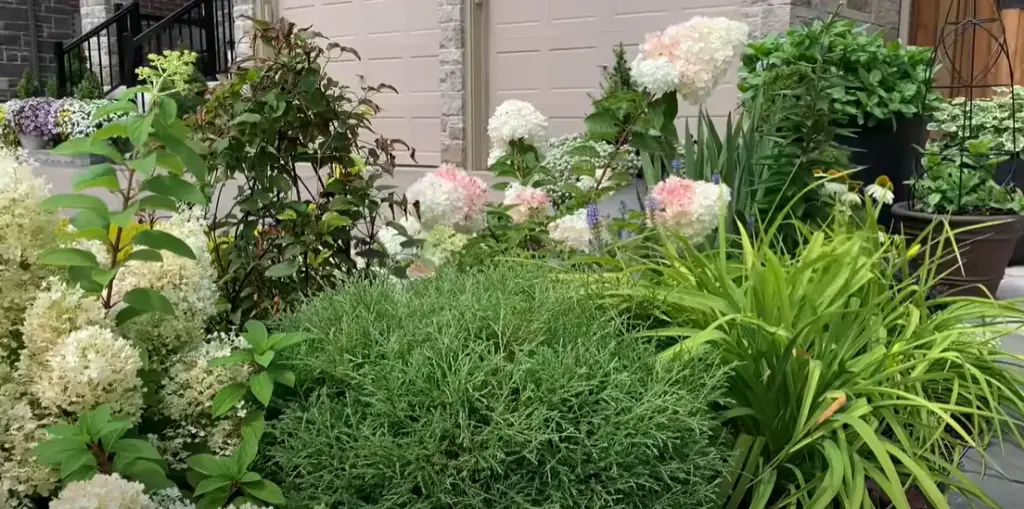
Hydrangea Explosion
It’s time to take your garden up a notch. Hydrangeas are one of the most versatile and easy-to-care plants that can add beauty, texture and color to any outdoor space. With so many varieties and colors available, there’s no limit to what you can do with hydrangeas in your garden! Here we explore some of the most popular Hydrangea Garden Ideas and answer some frequently asked questions to help you create a beautiful, lush garden. [1]
Strawberry Sundae
Creating a Strawberry Sundae Hydrangea garden is an easy way to bring the beauty of hydrangeas into your yard. This is a great option if you don’t have much time as it requires little maintenance, but still looks beautiful all summer long. To start, use plants that are already in bloom, like strawberry hydrangeas or pink hydrangeas. You can also add other garden elements such as rocks and gravel for texture and color contrast.
When it comes to planting your Strawberry Sundae Hydrangea garden, the most important thing is to give each of your plants enough room to grow. Plant them in an area that gets full sun and has well-draining soil. If your soil is clay or overly saturated, you can improve it by adding compost or other organic material to raise its fertility level. [1]
Hydrangea Trees
Hydrangea trees are a great addition to any garden. These colorful plants provide beautiful foliage and stunning blooms in the summer months, making them an eye-catching feature all year round. There are several types of hydrangeas available, so it’s important to know which type you want before getting started. [1]
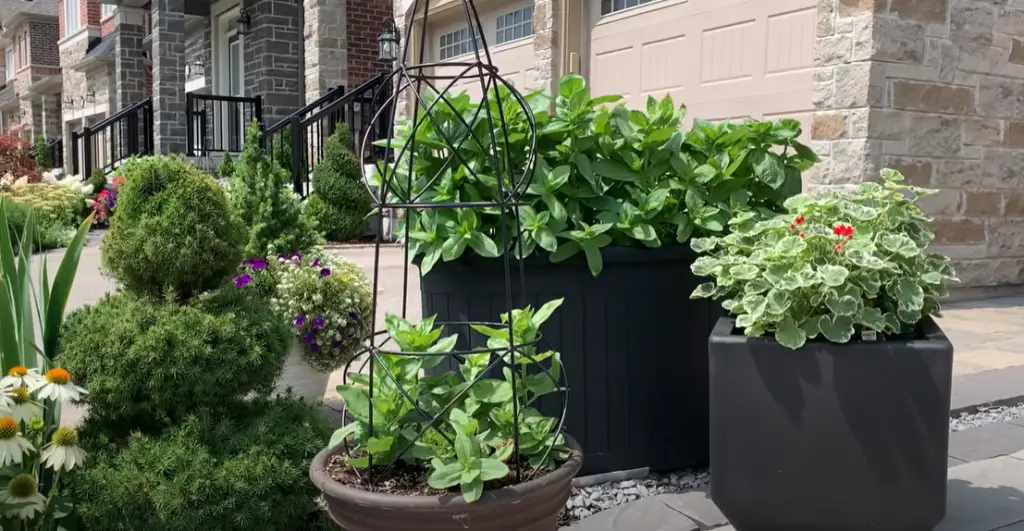
Why Didn’t My Hydrangeas Bloom?
One of the most common questions asked by gardeners is why their hydrangeas didn’t bloom. If you’re experiencing this issue, don’t worry – it’s a common problem! Here are some potential causes:
- Water stress: Hydrangeas need constant watering throughout the growing season to perform at their best. If you have experienced a particularly dry spell, it may be the reason your hydrangeas didn’t bloom.
- Wrong variety: Not all hydrangeas are created equal – some varieties require specific soil pH levels and climate conditions in order to bloom. Check to make sure you have planted the correct variety for your garden.
- Wrong timing: In many climates, hydrangeas bloom in the summer months. If you planted your hydrangeas too early or late, depending on the climate and variety, it may have prevented them from blooming. [1]
Blooms by the Water
Hydrangea plants love water, so why not plant them near your pond or pool? You can also place them in containers and position the pot at a suitable height. This way you get to enjoy lovely blooms while sitting by the water. If you want more of an impact, consider planting multiple hydrangeas along the edge of a pool or near a fountain. You can also place them in between stepping stones or even on the edge of a dock or pier. This way you won’t just have blooms to admire, but also some shade and respite from the sun while enjoying your time outdoors.
For extra protection against wind and harsh weather, consider installing a fence or trellis. This will protect your hydrangeas from wind and rain damage, while also protecting them from pests like deer or rabbits. It’s important that you don’t overcrowd the area with plants, as this can cause them to not get the proper amount of sun exposure they need to thrive. [1]
Cheaper by the Dozen
One of the best things about hydrangeas is their ability to fill a garden with beautiful blooms quickly and easily. A few carefully chosen varieties can give you months of vibrant color without breaking the budget. Hydrangea macrophylla, also known as bigleaf or French hydrangeas, are among the easiest to grow and come in a wide range of colors, from pink to blue and even white. Planting several together can give you an instant splash of color that will last throughout the summer months. [1]
Rustic Hydrangeas
Rustic Hydrangeas are the perfect addition to any garden or outdoor space that needs a touch of pastoral charm. Hydrangeas are known for their showy blooms, so they bring a pop of color and texture to your garden. To give your hydrangea garden a rustic look, consider using weathered containers, vintage furniture, and other distressed items. Choose weathered containers in muted colors, such as blues, greens, or browns. If you don’t have any vintage pieces on hand, look for wooden planters with a rustic finish. Plant your hydrangeas in these containers using soil amended with compost or peat moss to promote healthy growth. [1]
Green with Envy
Creating a garden that is the envy of your neighborhood doesn’t have to be hard. With hydrangeas, you can bring vibrant color and texture to any garden space. Not sure where to start? Don’t fret! We’ve gathered some tips on how to make the most of your hydrangea garden. [1]
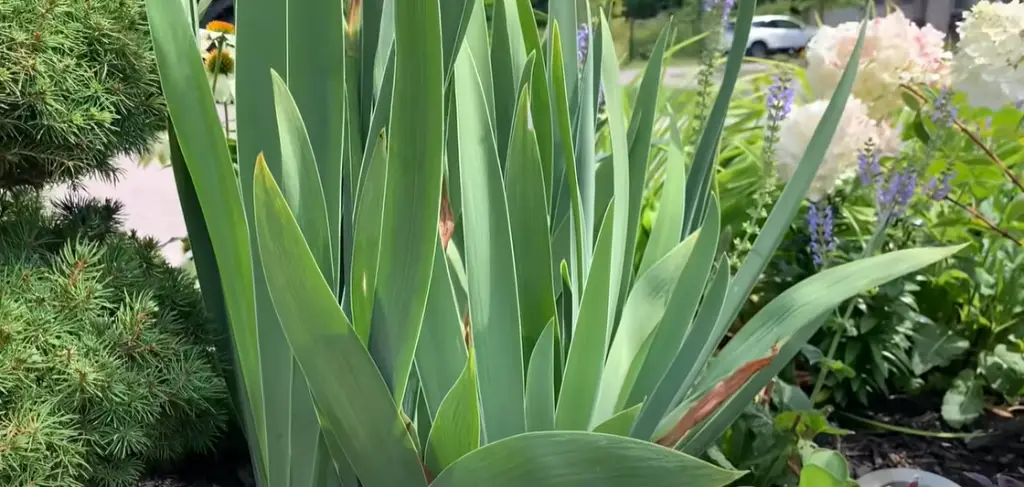
Cottage Hydrangeas
Cottage gardens are a classic style of landscape that has been gaining popularity in recent years and Hydrangea plants fit in perfectly. With their wild, tangled growth habit, they give the impression of an untamed garden that is full of charm and beauty. Plant hydrangeas around your cottage-style home to create a relaxed atmosphere and enjoy their gorgeous, full blooms come summertime.
When planting cottage-style hydrangeas, there are a few important considerations to keep in mind. First of all, you’ll need to make sure that your soil is well-draining and has enough organic matter for the plants’ root systems to thrive. Additionally, you should keep in mind that you’ll need to prune the plants regularly to help promote healthy growth as well as full blooms. [1]
Hydrangea Party
Hydrangeas are a beautiful and vibrant flower that can be used to enliven any garden. Whether you’re looking to create a stunning display for an outdoor party or jazz up your front yard, hydrangeas are the perfect choice. Here are some ideas for making the most of your hydrangea garden:
- Plant a variety of colors and sizes to create a beautiful display. Your hydrangea garden can be a stunning sight for guests at any outdoor party. Choose from white, pink, blue and other vibrant colors to make your garden pop!
- Create an eye-catching centerpiece with colorful hydrangeas in a vase. A cluster of hydrangeas in a vase makes for an interesting and subtle decoration that won’t overpower the rest of your garden.
- Give it some texture by adding greenery like ferns, ivy or boxwood to break up the display. Adding foliage to your garden will give it a natural look and feel.
- Use the hydrangeas to make an archway or trellis for your garden. Creating an archway or a trellis with some of your hydrangea plants will give your garden a unique look that your guests won’t forget. [1]
Beyond the Garden Gate
Once you have the basics of Hydrangea Garden Ideas in place, it’s time to think beyond the garden gate. Consider adding additional features or decorations that will draw attention and add interest to your garden area.
If you want to maximize space and make a statement, consider building an arch or trellis with climbing hydrangeas. Climbing hydrangeas can be trained to climb up the structure, creating a beautiful focal point for your garden. [1]
Blooms on Overdrive
If you’re looking for a garden that’s bursting with color and texture, consider hydrangeas. In the right conditions, they can be some of the most eye-catching plants in your yard. They come in many shapes and sizes, from mophead hydrangeas to Oakleafs and French lace varieties. And even better, they’re easy to grow and require minimal maintenance.
With careful planning and a few good tips, you can design an impressive hydrangea garden that will draw your neighbors’ eyes. Here are some of the top ideas for creating a hydrangea-centric garden. [1]
A Southern Welcome
Hydrangeas are a perfect way to add a splash of color and charm to any garden. Not only do they look beautiful, but they’re also incredibly easy to care for! From planting them in the ground or in pots on your patio, selecting an appropriate soil mix and finding the ideal spot to grow them – there are many ways to ensure that your Hydrangea plants stay in tip-top shape. Read on for some helpful tips and tricks to get the most out of your Hydrangea Garden Ideas! [1]
Among the Trees
The beauty of a hydrangea garden is that you can use the natural environment to your advantage. Planting your hydrangeas among other trees and shrubs gives them plenty of shade, improving their growth and color.
Trees provide shelter from extreme weather conditions, such as strong winds or hail, and protect the delicate petals of hydrangeas from direct sunlight, which can cause them to fade. Additionally, planting your hydrangeas among trees provides the plants with organic matter and nutrients from falling leaves and branches. [1]
Fairest of Them All
Hydrangeas have become one of the most popular garden plants. With their large and showy flowers, they add an amazing splash of color to any landscape. Whether you are looking for a big statement piece or something more subtle, hydrangea gardens can be designed to fit any style and budget. [1]
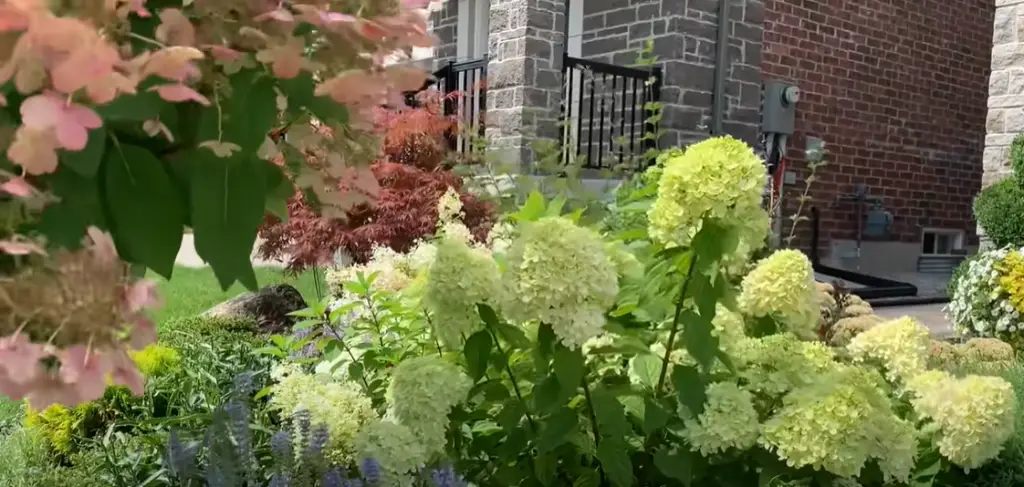
FAQ
Where is the best place to plant a hydrangea?
The best place to plant a hydrangea is in an area that receives at least six hours of full sun every day. It should be planted in well-drained, rich soil and mulched around the base of the shrub for extra protection. If you are planting multiple hydrangeas, it is important to leave enough room between them to ensure adequate air circulation.
What month is best to plant hydrangeas?
The best time to plant hydrangeas is in the spring when temperatures are mild, or early fall before the first frost. Planting during these times will give your shrubs adequate time to establish their root systems and adjust to their new environment.
What are the best plant supports for hydrangeas?
For the best support for your hydrangeas, you should use a stake or cage. These will provide extra stability throughout the growing season and help to keep your shrubs upright. Be sure to choose a stake or cage that is tall enough for when your hydrangea grows but not so large as to overwhelm the shrub.
Do hydrangeas like water or soil?
Hydrangeas prefer moist, but not saturated soil. They do not like standing water, so it is important to ensure that your hydrangea has adequate drainage. You should also provide watering during periods of drought and make sure the soil is evenly moist throughout the growing season. Additionally, mulching around the base of your shrub can help to retain moisture in the soil and encourage new growth.
Do hydrangeas like to be potted?
Yes, hydrangeas can be grown in pots with the right amount of care. Make sure to choose a pot with adequate drainage and use soil that is light and well-draining. Water your hydrangea regularly and fertilize it every two weeks during the growing season. Container hydrangeas should also be pruned regularly to keep them in shape.
Do hydrangeas survive winter?
Yes, hydrangeas are very hardy and can survive cold winters. It is important to protect your plants from frost by mulching them during the winter months. If you live in a particularly cold climate, you may want to consider planting your hydrangea in a sheltered spot or covering it with burlap for extra protection.
Can hydrangeas be in full sun?
Yes, hydrangeas can be grown in full sun. However, they will need some protection from the hot midday sun. Planting your shrub in an area that receives morning or late-afternoon sunlight is ideal and will help to keep it healthy and vibrant. Additionally, providing adequate water throughout the growing season is essential for keeping your hydrangea happy and healthy.
Do hydrangeas bloom all year?
No, hydrangeas typically only bloom once a year. However, some varieties may produce sporadic blooms throughout the growing season. If you want your hydrangea to bloom continuously, it is important to provide adequate water and fertilizer as well as pruning regularly so that new growth is encouraged.
Useful Video: Pruning & Fertilizing My Hydrangeas!
Conclusion
When it comes to landscaping with hydrangeas, the possibilities are virtually endless. Whether you want to create a traditional garden or something more modern and unique, adding hydrangeas can add beauty and color to any outdoor space. With their wide array of colors, shapes, sizes and textures, they are sure to please everyone in the family.
Be sure to consider the location and variety of your hydrangeas, as well as their needs for moisture, sunlight, and soil pH when planning your garden. Remember that there are countless ideas out there when it comes to adding these lovely plants to your landscape. With a little bit of research and imagination, you can create a beautiful hydrangea garden that will be the envy of all your neighbors.
Happy gardening!
References:
- https://www.southernliving.com/garden/flowers/hydrangea-gardening-photos










Leave a Reply
View Comments